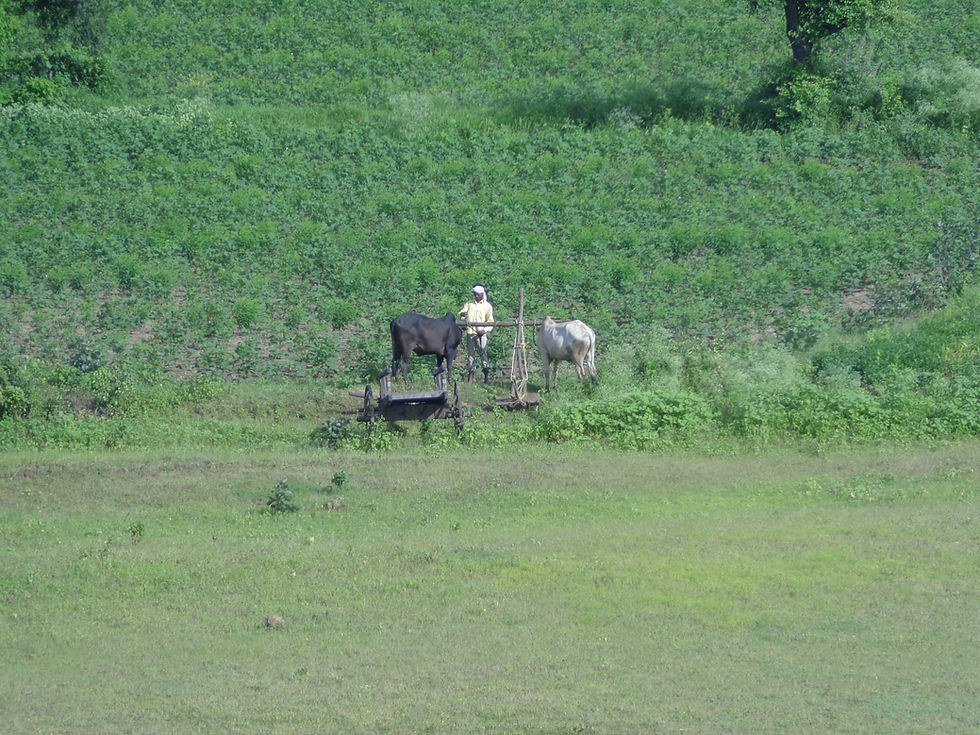SERIOUS FOOD INSECURITY
- assistant6952
- May 22, 2020
- 2 min read
Updated: Nov 17, 2020
As of 2018, close to a sixth of India’s population of over one billion people has been experiencing undernourishment. India ranks 15th most severe among 117 countries identified on the 2019 Global Hunger Index, dangerously close to an “alarming” level of hunger. Among India’s undernourished, approximately one fifth of the children under the age of 5 experience wasting, and one third of these children experience stunting. Additionally, anemia is prevalent in over half of Indian women of reproductive age.

Food insecurity is a lingering development challenge in Maharashtra. The per capita, per day, intake of calories in the state is 1933, and of proteins is 55.7 grams. These are significantly below most dietary recommendations, especially for populations living in the developing world. Food insecurity in Maharashtra has worsened because of a decrease in the production of cereal crops (e.g., sorghum, pearl millet, finger millet, and maize); pulse crops (e.g., pigeon pea, desi chickpea); and edible oilseeds (e.g., groundnuts, sesame, and sunflower). On the other hand, the production of industrial crops such as cotton and sugarcane has increased in the state. Overall, Maharashtra is now growing fewer quantities of fruits and vegetables and using more chemical fertilizers (6.2 MT) and more chemical pesticides (15,705 MT) annually in agriculture.
The Yavatmal district in the Vidarbha region of eastern Maharashtra, where Umarkhed is located, presents a concerning food security picture. On a scale from secure to extremely insecure, Yavatmal is a moderately food insecure district, ranking seventh worst among all districts in Maharashtra in the area of under-five mortality and third worst in terms of the number of underweight children. The ability of people in Yavatmal to buy nutritious food is undermined by low wages for rural laborers and a high prevalence of landless farmworkers in the workforce. Yavatmal is also among the bottom seven districts in access to safe drinking water.
People in Umarkhed access food through any one or a combination of 4 channels:
(1) they grow food for subsistence;
(2) they grow food for subsistence and sale for cash that is further exchanged for food in the market;
(3) they buy food at subsidized rates from the government, and/or
(4) they are sold food in return for their labor.
As the political-economic conditions under which food production has been happening in India change, people in Umarkhed are diversifying their livelihoods often outside of agriculture to reduce their dependence on subsistence farming and most forms of barter are ending. Unfortunately, the only food grains that the government sells at subsidized rates to low-income households are rice and wheat. Recipients of these food grains often find them subpar in quality and complain about not being able to access a more diversified food supply as a regime of wage labor is rapidly replacing all forms of barter and commodity exchange.

The food security, nutrition, and health of the people of Umarkhed can be enhanced through a combination of increased incomes, diversification of crops, reduced exposure to the volatility of conventional farming, and rejuvenation of local barter and interdependence, all of which are attended to in the Maati-Paani-Asha vision.



Comments